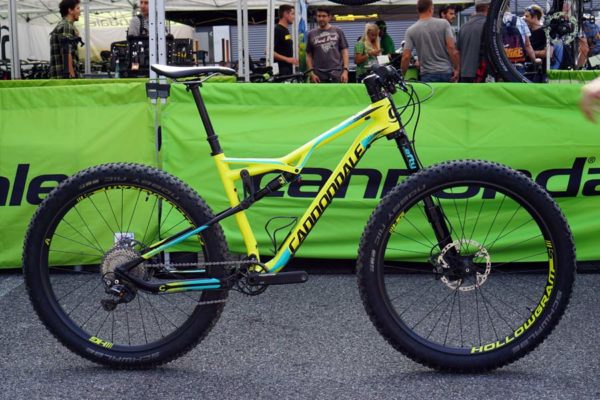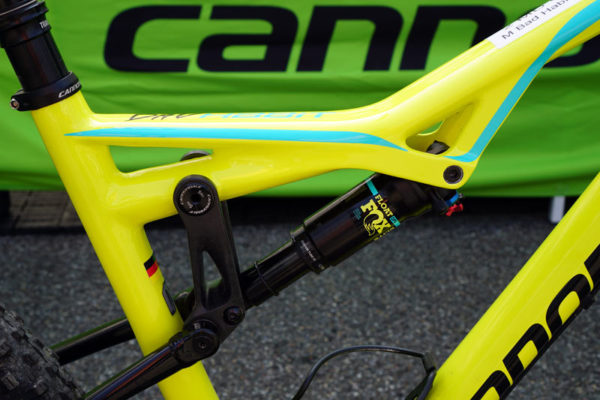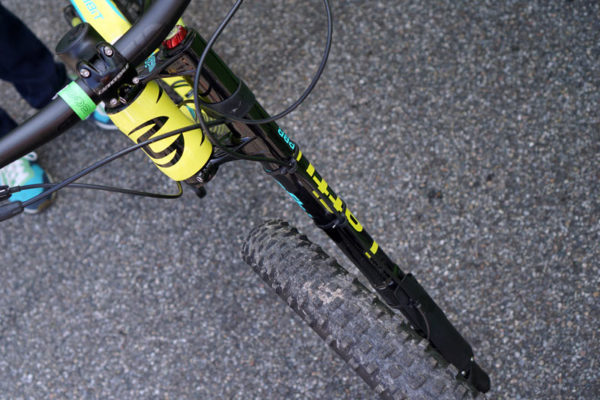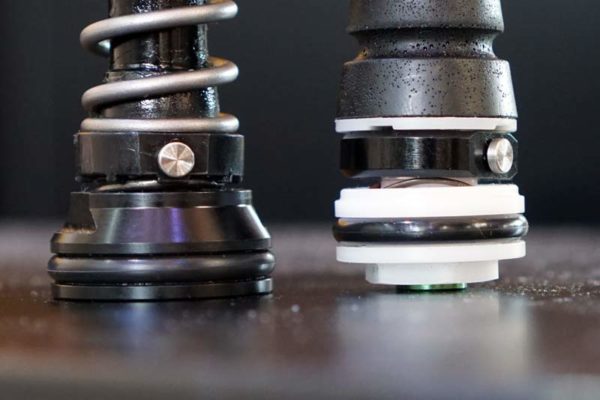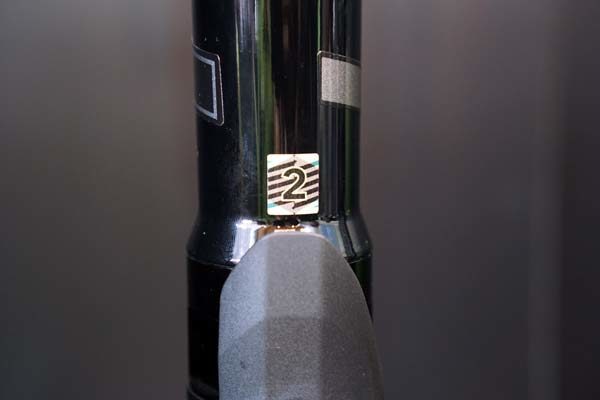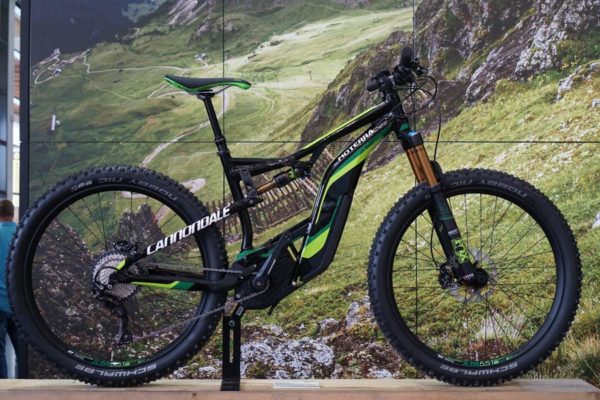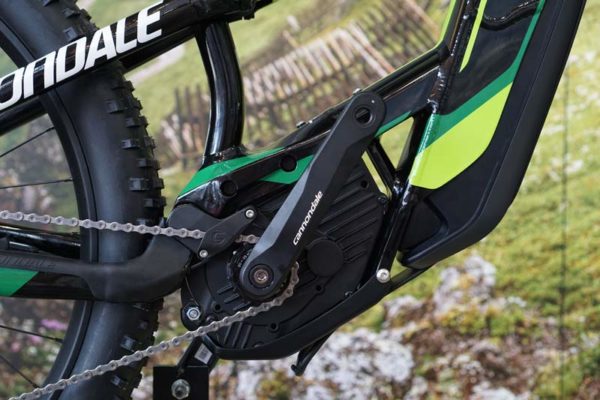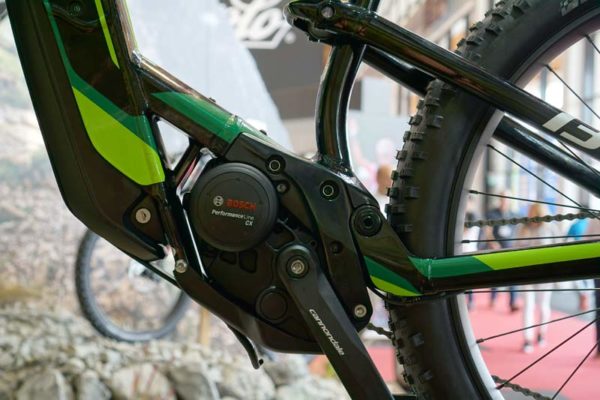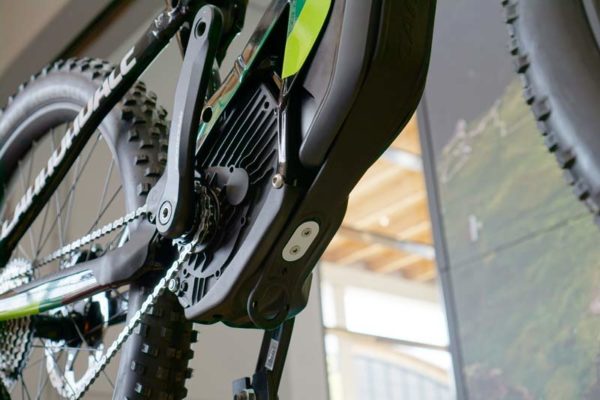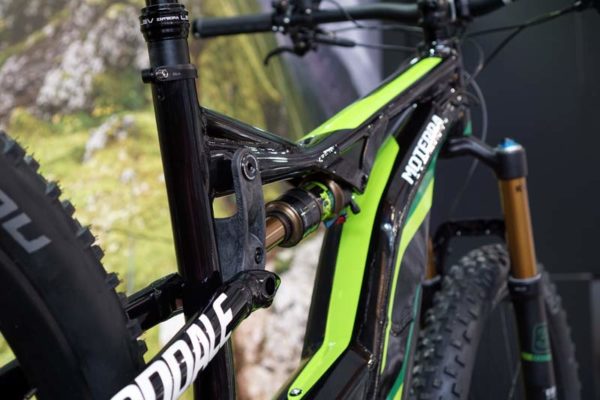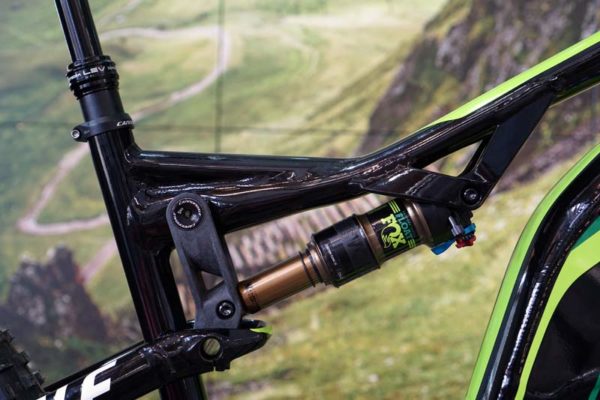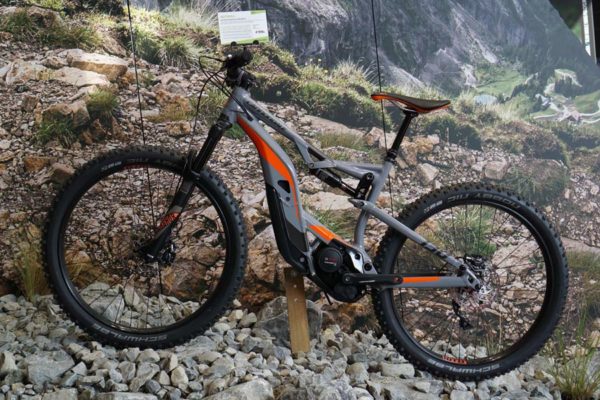We saw the Cannondale Bad habit carbon at PressCamp, but got a second look with a few more details at Eurobike…where we also peeked inside the Lefty’s new air spring upgrade kit and saw the new-to-North America Moterra e-bike, a full suspension pedal assist that’s ready to rip.
The Bad Habit Carbon 1 (shown) gets new Cannondale 40mm internal width carbon Hollowgram wheels made for 3.0 tires. It gets the Lefty XLR, a Shimano XTR/XT mix with Hollowgram SiSL SpideRings for $5,500. The Bad Habit Carbon 2 gets WTB scraper rims, Lefty PBR, and SRAM X1 wth Si cranks for $4,800…
Both models get BallisTec carbon front triangles, a Smartform alloy rear, carbon fiber linkage and have
120mm travel front and rear.
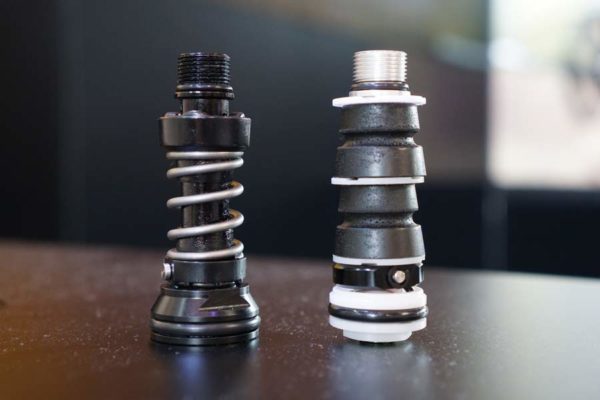
The Lefty has been using a version of the Rockshox Solo Air cartridge (modified in house by Cannondale) for several years now, but their system relied on plastic dividers and MCU springs, both of which can degrade or fail over time. So, any upgrade needed to address durability. They also wanted to increase suppleness, especially off the top. Solo Air self adjusts between positive and negative chambers, the Lefty’s system could occasionally have the bypass valve between +/- air chambers fail and cause the fork to sink into its travel and not return quickly or otherwise behave erratically. Each generation has improved on the design, but they felt there was still room for improvement.
Rather than make incremental improvements, they decided to make something specifically for the Lefty rather than simply adapting a Rockshox technology to their forks. It’s the first major new suspension project from Cannondale to be made public since hiring away Rockshox suspension product manager Jeremiah Boobar. They say it not only addresses the reliability issues, but also improves the product dramatically.
The new system is called 2Spring, and it’s a new way to integrate the Solo Air concept into the Lefty that’s massively robust, passing “so many millions of cycles that (they) just shut the testing machines off because none of them were failing.” Which is good, but then they put those same production level, machine-tested forks under 50 riders around the world to ride and test for five months. Apparently, everyone was impressed.
The benefit of Solo Air is that it automatically sets and equalizes positive and negative air pressures. 2Spring replaces micro-urethane bumpers inside the negative chamber, which served as a top out bumper. Those bumpers are not only a consumable item that can wear out, but also can vary in consistency between production runs. And the plastic plates between them occasionally made an annoying clicking noise at top out.
2Spring replaces the MCUs with a coil spring that requires less force to compress, making for a more seamless transition between compression and rebound. The second coil spring (visible under that round silver dot) controls the bypass valve that opens and closes to equalize pressure, which replaces a wave spring in early versions. It’s now a coil spring rather than a wave spring.
As positive chamber compresses and raises pressure, the negative chamber gets bigger and drops pressure. Then, as the fork rebounds, that reverses so that as it nears top out, the negative’s proportionally more balanced pressure helps slow things down to avoid a harsh top out. The contact points switch from a hard plastic to a composite material that’s softer and quieter, too.
Lastly, the angled chamfering above the O-ring seal (at bottom) also helps lubrication pool around the seal, which keeps everything sliding smoothly.
The new part is backwards compatible, availability and pricing should be announced soon. All MY2017 forks will come with it stock and be marked with the Two Spring graphic shown above.
The Cannondale Moterra has been in Europe for a minute, and now it’s coming to the USA.
Cannondale says they were the original partner with Bosch to create that brand’s e-bike system. That development work gave them a unique insight into the system and let them customize things to suit their needs.
The “problem” with full suspension e-bikes is that once the novelty of being able to motor up the hill wears off, they’re really not as much fun as a regular mountain bike because that extra weight of the battery usually sits up high, the wheel base is longer and the suspension design is often compromised to fit the motor.
So, Cannondale took the motor and rotated it upward at the front slightly, which made more room between it and the tire, letting them put the lower suspension pivot closer to where it would be on the Jekyll (the closest non-motorized equivalent).
Repositioning the motor gave them the shortest chainstays of any FS e-bike, which improves handling and makes it easier to lift the front wheel.
The other common compromise is using a modified down tube that has holes or openings in it for the battery. They used a hydroformed downtube that’s uninterrupted from the head tube to the motor, then welded on a battery box, which not only holds the battery but further stiffens the frame.
The result is a claimed excellent front-to-rear weight balance and a low CoG. A structural, trials-style skid plate under the motor and rubber protective “hammock” under the battery protect the expensive bits.
The bikes have 130mm travel and 27.5+ wheels and tires. The chainline is offset to the right using their Ai asymmetric design (like on the new Scalpel), which is paired with a 157mm DH rear hub spacing to get a perfect chainline and clearance for 27.5×3.0 tires. It uses a carbon linkage, double bearings and clamped thru axle at upper linkage, same as their 100% human-powered high end full suspension bikes.
The Moterra coming to U.S. is spec’d like the Moterra 2 in Europe, which also gets a Moterra 1 above it. Europe also get a 160mm Moterra LT (Long Travel) in two trim levels.
And no, it’s not a moped, it’s a pedal assist mountain bike.
